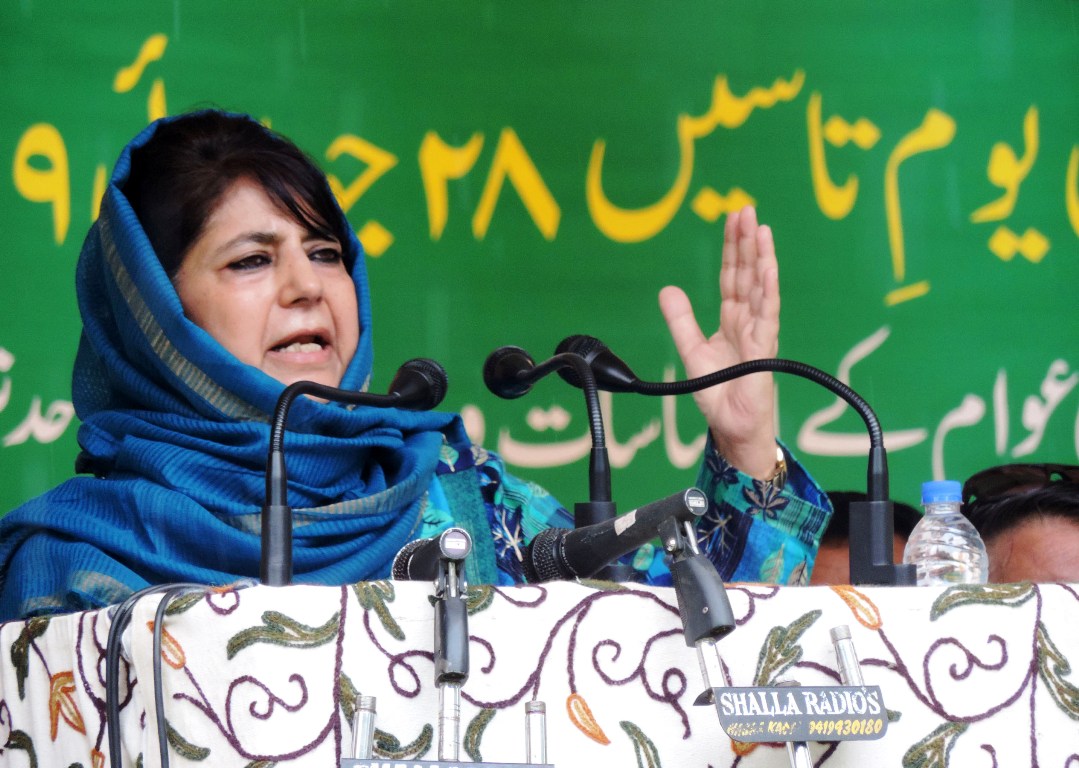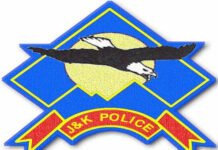by Khalid Bashir Gura
SRINAGAR: In the midst of the second wave of pandemic engulfed most of the world, an interesting and unprecedented development took place on earth, the night before. For the first time in history, mankind managed a small quantity of asteroid material from a far-away heavenly body wandering in space for millions of years. The operation was expensive, protracted but safe and satisfying.

This rare fiat by Japanese space agency is seen a major achievement, days ahead of the Chinese scientists getting fresh samples from the moon’s surface.
The asteroid samples are being considered a key element in understanding the origins of human life as the general belief is that the asteroids have remained untouched by any cosmic change for millions of years after they were dispersed in space at the time of the big bang.
The asteroid samples landed during wee hours on December 6 in the Australian desert. These were despatched from space by Japanese Hayabusa2 mission that has been working on this for last six years and has already travelled 3.25 billion miles. It cost Japan around US 300 million. The spacecraft Hayabusa-2 was launched in 2014, from Japan’s Tanegashima space centre and took four years to reach the asteroid Ryugu on June 2018. After taking measurements and taking samples, Hayabusa2 left Ryugu for Earth in November 2019 and landed the precious collection on December 6, morning.
“Scientists hope the samples, which are expected to amount to no more than 0.1 grams of material, could help shed light on the origin of life and the formation of the universe,” The ScienceAlert reported. “After six years of space travel, the box of treasures was able to land in Australia’s Woomera this morning,” Databus-2 project manager Yuichi Tsuda told a press conference.
“Asteroids are believed to have formed at the dawn of the solar system, and scientists say this one may contain organic matter that may have contributed to life on Earth,” The Hindu reported, adding that the mission by the Japan Aerospace Exploration Agency (JAXA) Hayabusa2 seeks to answer some fundamental questions about the origins of the solar system and where molecules like water came from.
#Hayabusa2 capsule returns to #Japan for analysis of asteroid samplehttps://t.co/Umor5TSnuq
— Kyodo News | Japan (@kyodo_english) December 8, 2020
The samples belong to an asteroid named Ryugu, that The New York Times described as “a dark, carbon-rich rock a bit more than half a mile wide.”
“Asteroids are rocky objects that orbit the Sun, much smaller than planets. They are also called minor planets. According to NASA, there are 994,383 known asteroids, the remnants from the formation of the solar system over 4.6 billion years ago,” The Indian Express reported. As asteroids and other smaller bodies in the vast space of this galaxy did not undergo the same metamorphic changes that planets did, materials from asteroids are considered very precious for research. The analysis of the composition of these asteroids gives insights into the formation, evolution, and the likely future of our solar system.
“Scientists study asteroids to look for information about the formation and history of planets and the sun since asteroids were formed at the same time as other objects in the solar system. Another reason for tracking them is to look for asteroids that might be potentially hazardous,” The Indian Express reported. “It is for these reasons that scientists are interested in gathering information about asteroids.”

Quoting, Yuichi Tsuda, the mission’s project manager, The New York Times wrote: “I’m home,” after a capsule containing the asteroid sample was recovered. “Hayabusa2 is home.” Dr Tsuda described the condition of the capsule, which set down amid bushes in the Australian desert, as “very perfect.”
The success of the mission and the science it produces will raise Japan’s status as a central player in deep space exploration, together with NASA, the European Space Agency and Russia.
Quoting, Shogo Tachibana, the principal investigator in charge of the analysis of the Hayabusa2 samples, The New York Times reported, “It’s really in the middle of nowhere,” he said in an interview. “He is part of a team of more than 70 people from Japan who travelled to Woomera for recovery of the capsule. The area, used by the Australian military for testing, provides a wide open space that was ideal for the return of an interplanetary probe,” the report added.
archeThe probe re-entry into the atmosphere was a fascinating picture. “In a live video feed from Australia where it was pre-dawn hours on Sunday, the capsule streaked across the sky rapidly, a tail streaming behind it as the atmosphere heated its surface. Minutes later, the mission’s managers detected a radio signal from a beacon in the capsule,” The New York Times reported. A helicopter flew the capsule to a building.
According to Hayabusa2 mission manager Makoto Yoshikawa, “We still don’t know the origin of life on Earth and through this Hayabusa2 mission, if we are able to study and understand these organic materials from Ryugu, it could be that these organic materials were the source of life on Earth,” he said.
Another senior researcher at the Japan Agency for Marine-Earth Science and Technology, said, “We’ve never had materials like this before… water and organic matters will be subject to research, so this is a very valuable opportunity,” ScienceAlert reported.
Half of Hayabusa2’s samples will be shared between JAXA, US space agency NASA and other international organisations, and the rest kept for future study as advances are made in analytic technology.
The probe collected both surface dust and pristine material from below the surface that was stirred up by firing an “impactor” into the asteroid. The material is believed to be unchanged since the time the universe was formed. The probe accessed the asteroid 300 million kilometres away from Earth in 42 months.
Quoting Hayabusa2 mission manager Makoto Yoshikawa, ScienceAlert reported him saying that “when it comes to smaller planets or smaller asteroids, these substances were not melted, and therefore it is believed that substances from 4.6 billion years ago are still there,” he told reporters before the capsule arrived.
Scientists are especially keen to discover whether the samples contain organic matter, which could have helped seed life on Earth.

According to The Indian Express, asteroids are divided into three classes. First, those found in the main asteroid belt between Mars and Jupiter, which is estimated to contain somewhere between 1.1-1.9 million asteroids. The second group is that of trojans, which are asteroids that share an orbit with a larger planet. The third classification is Near-Earth Asteroids (NEA), which have orbits that pass close by the Earth. Those that cross the Earth’s orbit are called Earth-crossers. More than 10,000 such asteroids are known, out of which over 1,400 are classified as potentially hazardous asteroids (PHAs).
Why Chang’e-5 Launch Is Unprecedented In Chinese Aerospace History?
The scientists for a very long time were interested in two asteroids – Bennu and Ryugu because they are relatively close to the Earth. “Ryugu and Bennu turned out to be surprisingly similar in some ways, both looking like spinning tops and with surfaces covered with boulders, but different in other ways,” The NYT reported. “The rocks on Ryugu appear to contain much less water, for one. The significance of the similarities and differences will not become clear until after scientists study the rocks in more detail.”
What is interesting that the spacecraft that sent the samples home has gone to the next mission. “Dropping off the Ryugu samples is not the end of the Hayabusa2 mission. After releasing the return capsule, the main spacecraft shifted course to avoid a collision with Earth, missing by 125 miles,” the ScienceAlert reported, “It will complete a series of orbits around the sun for around six years before approaching the first of the asteroids – named 2001 CC21 – in July 2026.”
The probe will not get as close as it did to Ryugu, but scientists hope it will be able to photograph CC21 and that the fly-by will help develop knowledge about how to protect Earth against asteroid impact. “It will now travel to another asteroid, a tiny one designated 1998 KY26 that is only 100 feet in diameter but spinning rapidly, completing one rotation in less than 11 minutes,” The New York Times wrote. When the probe arrives at the asteroid in July 2031, it will be approximately 300 million kilometres from Earth. Adding the ScienceAlert wrote: “It will observe and photograph the asteroid, no easy task given that it is spinning rapidly, rotating on its axis about every 10 minutes. But Hayabusa2 is unlikely to land and collect samples, as it probably would not have enough fuel to return them to Earth.”














